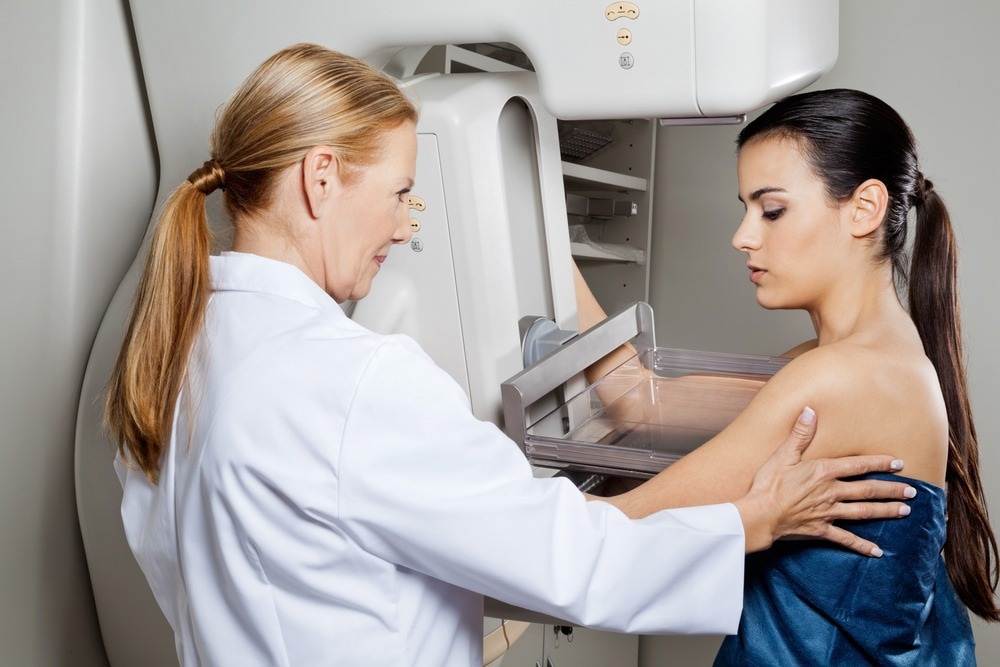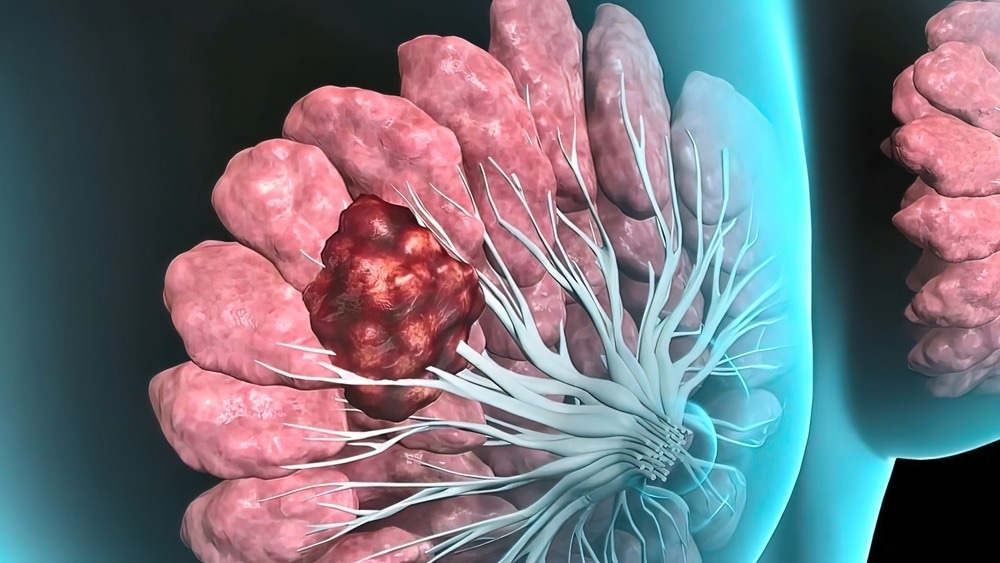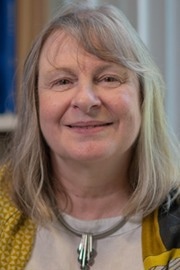I am Louise Jones, Professor of Breast Pathology at Barts Cancer Institute, Queen Mary University London. I first became interested in breast pathology and research aged 21 when I did a BSc research project during my medical degree. This focused on comparing features of breast cancer from different patients and also involved treating patients' tissues in culture to try and make them more 'normal'.
From the start, it struck me that working on human tissue samples was so important, and it became clear how valuable patient tissue is to research. I realized that pathology allowed me to work with patient samples, get the most value from them possible, and be part of a clinical team making a difference every day to patients.

Image Credit: Tyler Olson/Shutterstock.com
You are currently the co-principal investigator of the Breast Cancer Now Tissue Bank. Can you tell us more about this role and what it entails?
By collecting tissue samples from people affected by breast cancer and making them available to researchers, the Breast Cancer Now Tissue Bank accelerates progress towards faster diagnosis and better treatments. The Breast Cancer Now Tissue Bank sits across four sites at Barts Cancer Institute, Queen Mary University London (lead operational center), the University of Sheffield, the University of East Anglia in Norwich, and the University of Aberdeen.
We invite breast cancer patients who receive a diagnosis to donate their cells and tissues to research if they would like to. We collect their samples, process and store them, collect a variety of anonymized data linked to these samples too, and send them out to researchers to use in their projects upon request. We'll also take samples to the labs and work on them to add further value to them. For example, we will separate out different types of cells and process the tissues in certain ways. It's like a bank where you put your money. It's invested, and it grows over time. The Tissue Bank is the same. We add value to these tissues so that they can be used in a variety of different research projects.
As a Pathologist, I handle all the tissue samples at Barts, ensuring we always put the patient diagnosis first but being able to decide how we can use tissue from different individuals. I also get to speak to many of the research applicants to the bank, making sure we understand what they need for their experiments and sometimes helping them to select the most appropriate samples -it's very rewarding.
We hope that these tissues and cells will unlock some of the secrets behind breast cancer so we can improve patient outcomes in the future.
10 Years of the Breast Cancer Now Tissue Bank
Breast Cancer Now Tissue Bank is celebrating ten years of groundbreaking research. Why was this tissue bank founded, and what has it done for breast cancer research over the last decade?
The idea to establish a breast cancer tissue bank first came from a meeting in 2006 that brought together 56 of the UK's most influential breast cancer experts who identified the key gaps and priorities in breast cancer research.
They wanted to understand what research could have the greatest impact on improving the lives of people with breast cancer, and they found that the most significant barrier to accelerating progress was a shortage of high-quality breast cancer tissue samples with associated data.
The Breast Cancer Now Tissue Bank was founded in 2010, although for the first two years, it was closed for requests from researchers as the team worked to get it off the ground and start collecting samples from donors.
In 2012, the Tissue Bank opened its doors to researchers. The first tissue request that was fulfilled came from Dr. James Flanagan of Imperial College London and was very complex. Dr. Flanagan requested 20 vials of frozen tissues and 1792 microscopy slides with tissue for his research. It tested the Tissue Bank systems to the absolute limits at that early stage but was a valuable learning experience that helped the Tissue Bank improve.
Since then, the use of samples from the Breast Cancer Now Tissue Bank has been acknowledged in over 100 scientific publications. Critically, it helps researchers validate their work in clinically relevant human samples and allows them to use primary human cells to supplement their experiments and demonstrate their relevance to the clinical setting.
How does the tissue bank work at accelerating breast cancer research? What advantages does having an extensive collection of tissue samples have for global research?
It's critically important to have access to an extensive collection of tissue samples for global research. There's no better model to study a disease than the actual tissue samples themselves. For example, we can look at how breast cancer cells respond to a particular type of drug, and we can take tissues and look to see if there are particular genes, proteins, or other biomarkers expressed by different types of breast cancers.
High-quality research requires high-quality equipment, tissues, and samples to work on. There's a wide breadth of different tissues that researchers need to ensure that their research is accurate, so having a single place to go for all their samples is so important.
The Breast Cancer Now Tissue Bank is a unique project in so many ways because we're not just collecting the tissues. Our cell culture program also allows researchers access to primary cells isolated from the human breast tissue. We also provide information and advice to researchers on how to use these cells. In addition to the samples and advice from the Cell Team, applicants will have access to anonymized patient data for the samples provided to enhance their study. We are the only UK tissue bank offering this, and it has already generated a number of terrific projects.
We were one of the first tissue banks to have a data return policy which means the data generated from projects using the tissues and cells is returned to the Breast Cancer Now Tissue Bank to allow us to build up a more complete picture of all the different tissue samples we have in the bank. Our Bioinformatics Team has built robust and secure pipelines for curating and storing data and its link to other information, such as nucleic acid sequencing. It's like putting together the pieces of a jigsaw.
It's important we draw attention to how big it is as a project. It takes a huge amount of resources, and the fact we've been keeping our best research supplied for 10 years is a cause for celebration. Management of breast cancer is constantly evolving, and research questions change, so it is really important we evolve too and ensure we remain relevant and valuable to the research community. We are a tight team and work well together with the shared vision to make outcomes for breast cancer patients the very best they can be.
Are there particular breakthrough studies or research projects in the last decade that you would like to highlight?
Of the 12,000 samples allocated to research over the past 10 years, one of the highlights that comes to mind is the work by Professor Richard Grose and his colleagues. They used healthy cells donated to the Tissue Bank to recreate a structure closely resembling breast ducts in the lab. The researchers are now using this 3D model to study an early form of breast cancer called ductal carcinoma in situ (DCIS) to understand how the disease works and test different treatments. We hope it will lead to some important next treatment and prevention steps.
We've also supported a number of studies looking at triple-negative breast cancer. It's an aggressive form of breast cancer that is harder to treat and, unfortunately, has a higher risk of coming back or spreading in the first few years after treatment, so it's vital we understand more about it.
A few projects have requested samples for male breast cancer, and that's important because the biology for male breast cancer isn't always the same as female breast cancer.
Researchers worldwide are able to apply to access various tissues. How important is this level of global collaboration to breast cancer research?
Researchers from across the globe can apply to access samples, and The Breast Cancer Now Tissue Bank has supported research teams in 12 countries, including the UK, Taiwan, USA, Italy, Finland, Sweden, South Korea, Portugal, Norway, Spain, Switzerland, and Germany. Global collaboration is incredibly important for breast cancer research, especially for the rarer types where there are fewer samples available.
We're incredibly proud to be part of such an ambitious international community of scientists.

Image Credit: picmedical/Shutterstock.com
Since starting your career in breast cancer research, what has been your proudest achievement?
There have been many personal and shared high points, but being involved right from the inception of the Tissue Bank and establishing the Cell Bank is certainly one of my proudest achievements. I believe we are uniquely able to support researchers with the material they could not get elsewhere.
I am also proud of how the Tissue Bank has been able to work with external partners for mutual benefit. For example, we worked with Genomics England to undertake DNA sequencing of a cohort of our breast cancers as part of the 100,000 Genomes Project. This was for the project but also gives our researchers free access to this data which otherwise would cost £100,000s of pounds – a win-win situation!
What do you believe the future landscape of breast cancer research to look like? Are you hopeful for continued breakthroughs in the coming years?
The breast cancer research field has changed so much in the last 10 years.
Requests from researchers studying the normal and malignant breast have become more and more sophisticated over the years. In the early days, people were happy just to have tissue samples or primary breast cells for their experiments in the lab. But as science has evolved and technology has developed, requests have become much more complex, particularly in the creation of 3D models using normal breast cells.
Everyone involved with the Tissue Bank is an active researcher, so we know and understand the research landscape. This means we have been able to adapt and evolve over the last 10 years to meet the need of researchers, and we will continue to do this. I believe there will be a growing emphasis on access to and sharing existing data to reduce duplication and speed up research, which is at the core of our ethos. The projects the Tissue Bank supports are phenomenal, and I'm confident they will continue to help provide new breakthroughs for women and men diagnosed with breast cancer.
What's next for you and your work in breast cancer?
My own group has been working on DCIS and its molecular characteristics. We recently have again partnered with Genomics England to take this to the next stage as it is desperately under-researched.
In my clinical role, I am working to implement molecular testing for our breast cancer patients, which is challenging but essential to generate knowledge and improve patient care. Needless to say, we will be asking our patients if they will allow us to link this information to the Tissue Bank sample and code!
Where can readers find more information?
For more information about the Breast Cancer Now Tissue Bank, please visit breastcancernow.org/breast-cancer-research/breast-cancer-now-tissue-bank
To find out how you can apply to the Breast Cancer Now Tissue Bank, please visit https://breastcancernow.org/breast-cancer-research/breast-cancer-now-tissue-bank/how-apply-tissue-bank
For more information about our cell culture bank, please visit https://breastcancernow.org/breast-cancer-research/breast-cancer-now-tissue-bank/cell-culture-bank
To find out more about Breast Cancer Now's research, please visit www.breastcancernow.org/research
About Professor Louise Jones
Professor of Breast Pathology, Barts Health NHS Trust and head of Breast Pathology Research Group in Centre for Tumour Biology, Barts Cancer Institute.
Trained at University of Leicester and did a PhD in Control of Breast Cancer Cell Invasion. Main research focus is on the role of the microenvironment in mediating progression of DCIS to invasion, and the biology of high Mammographic Density.
Co-PI of the national Breast Cancer Now Biobank including the Breast Cell bank which isolates primary cell populations for in-vitro functional studies. Lead for Molecular Pathology with Genomics England. Cellular Pathology Lead for North Thames GLH and Chair for Cell Path Genomics Focus Group, the RCPath Genomic Medicine and Reproductive Science Specialist Advisory Committee.